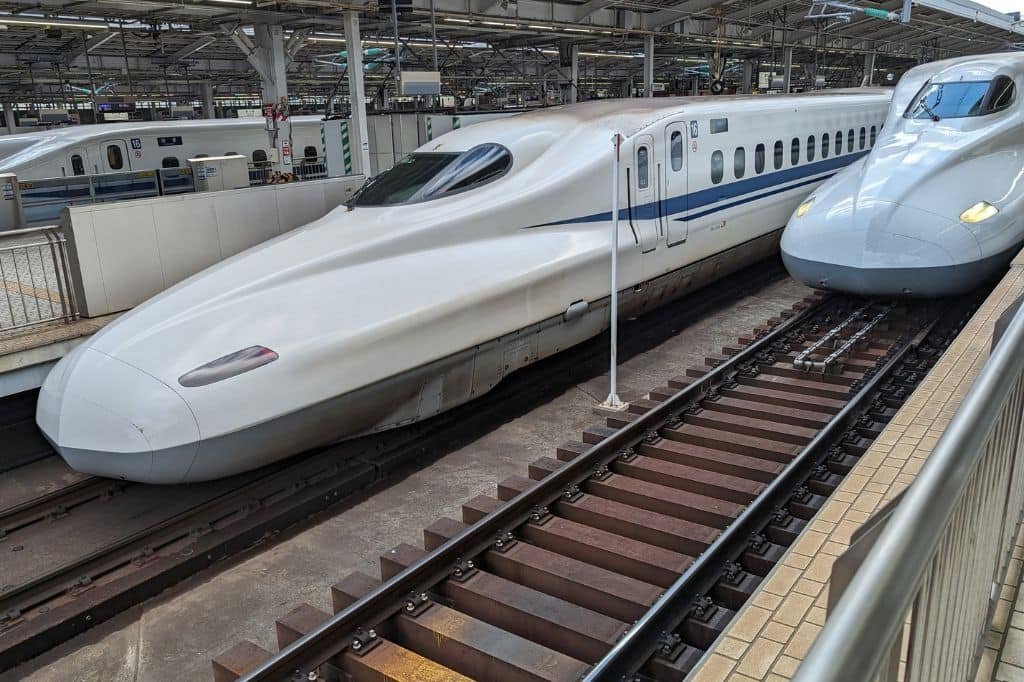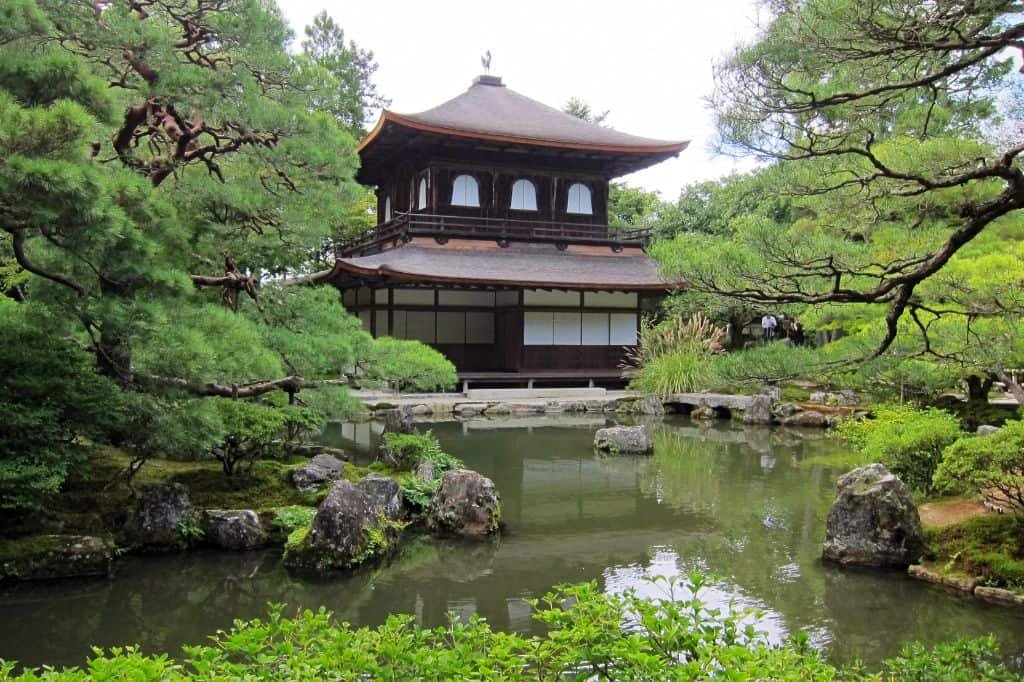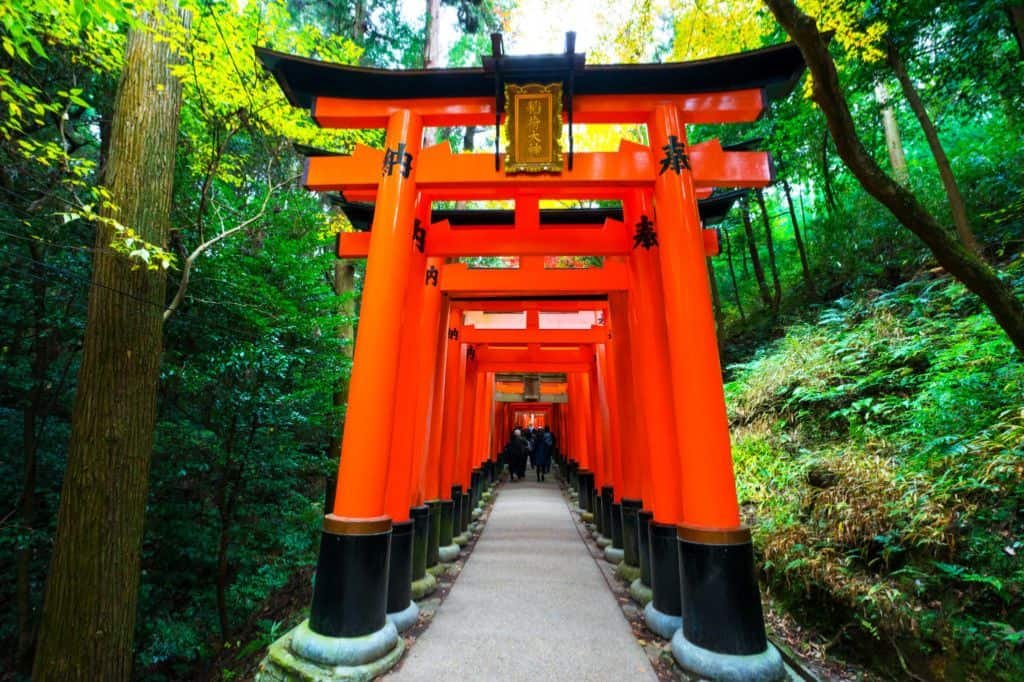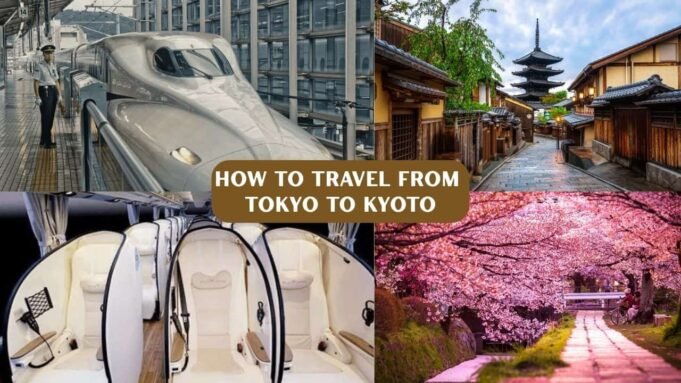The journey from Tokyo to Kyoto is one of Japan’s most traveled routes, connecting the nation’s bustling capital with its cultural heart. Tokyo offers modern skyscrapers, high-tech entertainment, and dynamic city life, while Kyoto preserves centuries of tradition through its temples, shrines, and historic districts. Together, they provide a perfect balance of old and new Japan. This route is popular among both domestic and international travelers for its convenience, variety of transport options, and the chance to experience two distinct sides of Japanese culture in a single trip.
Transportation Options from Tokyo to Kyoto
Shinkansen (Bullet Train)

Japan’s Shinkansen is the fastest and most convenient way to travel from Tokyo to Kyoto. Three main services operate on the Tokaido Shinkansen line:
- Nozomi: Fastest option at about 2 hours 15 minutes; not covered by the JR Pass.
- Hikari: Around 2 hours 40 minutes; JR Pass eligible.
- Kodama: Stops at every station, taking about 4 hours; JR Pass eligible.
Ticket prices for a one-way trip range from ¥13,000 to ¥14,500 depending on seat class. Tickets can be purchased online, through vending machines, or at JR ticket offices. If you hold a JR Pass, simply reserve your seat or board a non-reserved car.
Domestic Flights
Flying from Tokyo to Kyoto involves traveling from Haneda Airport or Narita Airport to Osaka Itami Airport or Kansai International Airport. Flights take about 1 hour, but check-in, security, and transfers add extra travel time.
- Pros: Can be cheaper with promotional fares; scenic aerial views.
- Cons: Longer overall travel time than the Shinkansen; less city-center convenience.
Average one-way ticket prices range from ¥7,000 to ¥15,000, depending on the airline and booking date.
Highway Buses
For budget-conscious travelers, highway buses from Tokyo to Kyoto offer both daytime and overnight services. The journey typically takes 7-9 hours.
- Overnight buses save on accommodation and allow more sightseeing time.
- Daytime buses are ideal for relaxed travel with scenic countryside views.
Tickets can cost as low as ¥3,000–¥6,000, depending on the level of comfort, ranging from standard seating to luxury sleeper coaches with extra legroom, blankets, and Wi-Fi.
Car Rental
Driving from Tokyo to Kyoto offers flexibility to explore rural towns and off-the-beaten-path destinations. The trip via the Tomei or Meishin Expressway takes around 6–8 hours, depending on traffic.
- Toll fees can total ¥10,000–¥13,000 one way, and you’ll also need to budget for fuel.
- Parking in Kyoto is limited and often expensive, so it’s best suited for travelers who plan to visit multiple destinations along the way rather than just Kyoto.
Read More: Best Things to Do in Kyoto, Japan
Best Time to Travel from Tokyo to Kyoto
The ideal time to travel from Tokyo to Kyoto depends on your preferred experiences. Spring (late March to early April) is famous for cherry blossoms, with Kyoto’s temples and parks blanketed in pink. Autumn (mid-November) offers vibrant foliage, especially in Arashiyama and temple gardens. Summers can be hot and humid, while winters are cold but less crowded. Travel conditions are generally smooth year-round thanks to Japan’s efficient transport system. To avoid crowds and higher prices, steer clear of Golden Week (late April–early May), Obon (mid-August), and New Year holidays, when domestic travel peaks.
Suggested Itineraries
One-Day Trip (Highlights)
A one-day trip is possible thanks to the Shinkansen’s speed. Depart Tokyo early in the morning (around 6–7 a.m.) to maximize time. Upon arrival, visit Fushimi Inari Taisha for its iconic torii gates, Kiyomizu-dera Temple for panoramic views, and Gion District for traditional wooden architecture. Enjoy a quick lunch of Kyoto specialties like yudofu or matcha sweets before exploring Kinkaku-ji (Golden Pavilion) in the afternoon. Return to Kyoto Station for an evening Shinkansen ride back to Tokyo.
2–3 Day Trip
With more time, you can explore Kyoto at a relaxed pace and include nearby cities. Spend the first day visiting Arashiyama Bamboo Grove, Tenryu-ji Temple, and the scenic Togetsukyo Bridge, followed by the Nishiki Market for local delicacies. On day two, take a short train ride to Nara to see the Great Buddha at Todai-ji Temple and the friendly deer at Nara Park. If you have a third day, head to Osaka for street food in Dotonbori or visit Osaka Castle. Return to Kyoto in the evening before heading back to Tokyo.
What to See Along the Way
Traveling from Tokyo to Kyoto doesn’t have to be a straight shot; you can make memorable stopovers en route. Hakone, near Mount Fuji, offers hot springs, art museums, and stunning lake views. Nagoya, Japan’s fourth-largest city, is known for Nagoya Castle, the SCMAGLEV Railway Park, and delicious local dishes like miso katsu. Closer to Kyoto, Lake Biwa in Shiga Prefecture is Japan’s largest freshwater lake, perfect for nature walks and photography. Scenic train routes, especially on the slower Kodama Shinkansen or local lines, provide views of rural landscapes, tea plantations, and seasonal colors that make the trip even more enjoyable.
Read Also: Nintendo Museum Kyoto
Things to Do in Kyoto After Arriving

Kyoto offers an endless list of sights and experiences, making it a cultural treasure trove. Visit Kinkaku-ji (Golden Pavilion), a shimmering gold-leaf-covered temple surrounded by serene gardens. Explore the thousands of vermilion gates at Fushimi Inari Shrine, and stroll through the Arashiyama Bamboo Grove, where towering stalks create a magical atmosphere.
For immersive cultural experiences, join a traditional tea ceremony in a machiya (townhouse) or rent a kimono for the day to explore Kyoto’s historic districts in style. Food lovers can enjoy Kyoto’s signature dishes, from matcha-based sweets in Uji to kaiseki (multi-course cuisine) and yudofu (tofu hot pot) near temple grounds.
Tips for a Smooth Trip
Ticket booking tips: Reserve Shinkansen seats in advance during peak travel seasons. For flexibility, consider non-reserved seating on less crowded days. Online booking platforms and JR ticket offices both work well, and JR Pass holders should book early to secure preferred times.
Packing essentials: Wear comfortable walking shoes, bring a light rain jacket or umbrella, and carry a reusable water bottle. In summer, pack sunscreen and a hat; in winter, dress warmly in layers.
Navigating Kyoto’s public transport: The city’s bus network covers most tourist attractions, but it can be slow during peak hours. Consider using trains and subways for faster travel between districts. A one-day bus pass can be cost-effective if visiting multiple sites.
Using the JR Pass for cost savings: While the Nozomi Shinkansen is excluded, you can use the JR Pass on the Hikari or Kodama services between Tokyo and Kyoto at no additional cost. Within Kyoto, the pass is valid for JR-operated local lines, which can help reach destinations like Arashiyama and Fushimi.
Navigating train stations: Tokyo and Kyoto Stations are large, busy hubs. Allow extra time to find your platform, especially if transferring lines. Look for bilingual signs, follow overhead arrows, and check departure boards frequently to avoid last-minute confusion.
Also Read: Japanese Cemetery Park
Must-Visit Attractions in Kyoto

Fushimi Inari Shrine
Arguably Kyoto’s most iconic landmark, Fushimi Inari Taisha is known for its thousands of vermilion torii gates winding through forested hills. Dedicated to Inari, the Shinto god of rice and prosperity, this shrine is open 24/7 and free to enter. The full trail to the summit takes around 2 hours round-trip, but can be enjoyed in smaller segments.
Kiyomizu-dera
A UNESCO World Heritage Site, Kiyomizu-dera sits on a hillside with stunning views over Kyoto. Its wooden terrace, built without nails, is especially photogenic during cherry blossom and autumn foliage seasons. Don’t miss the nearby Otowa Waterfall, said to grant wishes.
Arashiyama Bamboo Grove
Located on the western edge of Kyoto, this enchanting bamboo forest is a favorite among photographers. A stroll through the grove feels otherworldly, especially in the early morning when it’s quiet. Combine with visits to Tenryu-ji Temple and the Togetsukyo Bridge for a full Arashiyama experience.
Nishiki Market
Nicknamed “Kyoto’s Kitchen,” this narrow shopping street spans five blocks and features over 100 food stalls and specialty shops. Sample everything from grilled mochi to pickled vegetables, and try local delicacies like yuba (tofu skin) or matcha sweets.
Philosopher’s Path
This peaceful stone path follows a canal lined with cherry trees and passes by several small temples and shrines. It’s especially beautiful during sakura season. Named after philosopher Nishida Kitaro, who meditated while walking here, it’s ideal for a reflective stroll between Ginkaku-ji and Nanzen-ji.
Where to Stay
Kyoto offers a wide range of accommodation options to suit every travel style and budget. Ryokans provide a traditional Japanese experience, with tatami mat rooms, futon bedding, and multi-course kaiseki meals. Guesthouses and hostels are ideal for budget travelers and often foster a friendly, social atmosphere. Hotels, from luxury brands to business-style stays, offer modern comforts and convenience.
When choosing an area:
- Gion: Perfect for cultural immersion, geisha sightings, and proximity to historic streets.
- Arashiyama: Scenic and peaceful, near bamboo groves and river views—great for nature
READ: Time Difference Between California and Japan
Budget Planning
Transportation costs vary depending on your choice:
- Shinkansen: ¥13,000–¥14,500 one way for reserved seats, less for unreserved; JR Pass users save significantly.
- Flights: ¥7,000–¥15,000 one way, plus airport transfers.
- Highway buses: ¥3,000–¥6,000 depending on comfort level.
- Car rental: ¥10,000–¥13,000 in tolls plus fuel and rental fees.
Saving on accommodation: Book hotels or guesthouses near Kyoto Station for easy transport access. Midweek stays are usually cheaper, and capsule hotels or business hotels offer budget-friendly rates.
Ticket discounts: Purchase transport passes like the JR Pass, Kansai Thru Pass, or Kyoto City Bus Pass to cut down on travel costs. Booking Shinkansen or flights early often secures the best prices.
Conclusion
Traveling from Tokyo to Kyoto offers an unforgettable contrast between Japan’s cutting-edge modernity and its timeless traditions. The journey is easy, with transport options to suit every budget and travel style. From bullet train speed to scenic bus rides, you can tailor the trip to match your schedule. Once in Kyoto, the city’s temples, gardens, and cultural experiences provide a peaceful counterpoint to Tokyo’s energy. Pairing these two destinations in a single itinerary gives you a deeper understanding of Japan’s diversity, making it one of the most rewarding travel experiences in the country.
















[…] To Know More: How to Travel from Tokyo to Kyoto […]
Comments are closed.